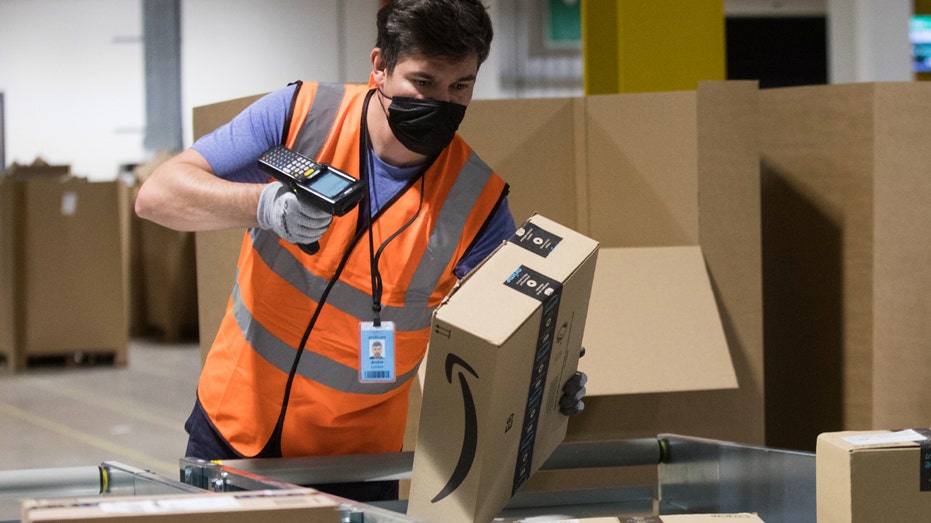Amazon shortens paid COVID-19 sick leave after CDC updates isolation guidance
All US employees are impacted by the policy change regardless of vaccination status
Amazon is trimming its coronavirus-related paid leave after federal health officials shortened the isolation period for some Americans.
The e-commerce giant told employees Friday that they will be given seven days of paid leave, or a total of 40 hours, down from the previous total of 10 days.
CLICK HERE TO READ MORE ON FOX BUSINESS
| Ticker | Security | Last | Change | Change % |
|---|---|---|---|---|
| AMZN | AMAZON.COM INC. | 239.12 | +0.94 | +0.39% |
| WMT | WALMART INC. | 119.70 | +0.50 | +0.42% |
The policy went into effect immediately and impacts all U.S. employees regardless of their vaccination status.
GET FOX BUSINESS ON THE GO BY CLICKING HERE
"As we have throughout the COVID-19 pandemic, we continue to work closely with public health authorities and our own medical experts to determine the most effective ways to keep our employees and our communities safe," an Amazon spokesperson told FOX Business.

An employee wearing a protective mask scans a package at an Amazon.com Inc. fulfillment center in Kegworth, U.K., on Monday, Oct. 12, 2020. (Chris Ratcliffe/Bloomberg via Getty Images / Getty Images)
The move comes just after Walmart announced that it had cut its paid leave in half.
Under Walmart's updated COVID-19 emergency leave policy, employees who have been mandated to quarantine or have tested positive for COVID-19 will get up to one week of paid leave through March 31, 2022. Previously, Walmart employees were given two weeks of paid leave.
WALMART HALVES COVID-19 PAID LEAVE AFTER CDC TRIMS ISOLATION GUIDANCE
At the beginning of the pandemic, many companies instituted robust sick leave policies. However, some of those have since been scaled back now that the Centers for Disease Control and Prevention (CDC) cut isolation restrictions for asymptomatic Americans from 10 to five days and similarly shortened the time that close contacts need to quarantine.
CDC officials said the guidance is in keeping with growing evidence that people with the coronavirus are most infectious in the two days before and three days after symptoms develop. The decision also was driven by a recent surge in COVID-19 cases, propelled by the omicron variant.
The Associated Press contributed to this report.





















